MInd Training for TaiChi. Call +65 94312135 or email to tsenyu1@singnet.com.sg
TAI CHI SYNERGY SERVICES
The rack can be purchased and is specifically designed to achieve mobility (Refer to http://taichihealthfitness.blogspot.com/ for the full descriptions and purchases).
■ It allows you to stretch the anterior muscles of the chest and shoulders that are deemed short and often inflexible due to poor posture.
■ It mobilises the thoracic spine, increasing your ability to extend and rotate through this important area.
■ Mobilising the thoracic region helps increase the available movement in the shoulder and pelvic region, allowing us to move more freely and efficiently.
■ Serves as treatment equipment and later as fitness equipment during the maintenance phasse. Enhance quality of life over life cycle
Many good results and testimontials have been received from Sedentary adults, Yoga, Pilates and Tai Chi practioners / instructors, cyclists, runners, swimmers, golfers, tennis players, badminton players, dancers, scoliosis clients, clients with low back pain / hand numbness / nerves impingement etc.
Provides You With Physical Activity Tips and Recommendations.
Sunday, November 2, 2008
Overweight & Obesity
Global and United States
Obesity is an excess body weight due to fat deposition as compared to set standards of body weight (Afridi & Khan, 2004). It is a single chronic disease that trigger many kinds of diseases such as type 2 diabetes that leading to cardiovascular disease and cancers. Type 2 diabetes is estimated to be 30 million in US and worldwide estimation of 120 million (Amos, McCarty, & Zimmet, 1997). The prevalence of diabetes for all age-groups worldwide was estimated to be 2.8% in 2000 and 4.4% in 2030 and the total number of people with diabetes is projected to rise from 171 million in 2000 to 366 million in 2030; the prevalence of diabetes is higher in men than women, but there are more women with diabetes than men and increase in proportion of people > 60 years of age (Wild et al., 2004). Similar trends also on childhood overweight and obesity (Wang & Lobdtein, 2006)
Asia Pacific region
There has been dramatic increase of obesity in Asia-Pacific region in recent years. In the Republic of North Korea’s National Nutrition Survey 1995, only 1.5% of the population was classified as obese (BMI > 30kg/m^2) and 20.5% overweight (BMI 25-29.9 kg/m^2); in Thailand, 4% were obsess and 16% overweight; in Malaysia, 4.7% of men and 7.7% of women were obese (Inoue et al., 2000).
Singapore
A national committee was appointed in 1991 to review the national health plan for 1990s, followed by the National Healthy Lifestyle programme in 1992 with extensive use of mass media and widespread school, workplace, and community health promotion programme emphasizing healthy diets and regular exercise (Cutter, Tan, & Chew, 2001). The obesity remained unchanged at 6% between 1992 and 1998, but among the Malay women, 11.1% were classified as obese in 1992, and 16.2% in 1998; and the Indian women are 12.5% and 17.5% comparatively (Inoue et al., 2000); the ethnic difference has implications on the acute myocardial infarction (Mak et al., 2003). In the nation health survey 2004 of age between 18 – 69 years, the diabetes rates had slight improvement from 9% in 1998 to 8.2% in 2004 and this corresponds to proportion of adults who exercise regularly increased from 16.8% in 1998 to 24.9% in 2004; no exercising drop from 54.7% in 1998 to 48.1% in 2004 ("National Health Survey 2004", 2005). In the 2005 National Sports Participation Survey (Market Probe-Precision Research Pte. Ltd., 2005), the incidence of “regular sports participants” has risen from 38% in 2001 to 48% in 2005 among adult population (i.e. aged 15 years and above). Nevertheless, the overweight and obese are still relatively high, and are at risk of obesity related diseases. To further improve the obesity condition, Ministry of Education policy requires the schools to have at least 70 minutes of physical education per week to equip young people to be well prepared starters in taking ownership and responsibility for their own health and well-being through initiatives for PRIDE (personal responsibility in daily effort) and PLAY (participation in lifelong activity for youths) programme (Chia, 2007).
Health cost
Davis, Knuiman, Hendrie, and Davis (2006) estimated the cost of diabetes for both individual and society is $A636 million based on type 2 diabetes in 2000 and projection to 2051; and as the result of aging population it will double the cost contributing to financial burden and funding to rising health-care costs. This trigger for the health and fitness industries and demand for gyms, weight-loss centres, health clubs and diet solutions.
A discussion on health problems of excess weight
Industrialization
An effect of acculturation or modernization and attributed with the reduced levels of activity increasing the prevalence of obesity. As the populations become more westernized, dietary composition changes to include more saturated fat, less fibre and exposure to obesogenic environment; and these lead to more energy dense diets causing higher energy intake leading to positive energy balance. Prentice and Jebb (2004) in his research explain the imbalance between the effectiveness of the hunger and satiety signals leads to an asymmetry in appetite control that helps to explain why current life styles create such a high level of susceptibility to obesity in most individuals. In Asia and especially Chinese ethnic group, obesity was and some cases remains, a symbol of wealth and increased social status (Dowse, Hodge, & Zimmet, 1995). Other factors of influences are occupation and education, as well as stresses from urban society.
Genes
Nevel J.V. in 1962 (as cited in Andrew, Alexandra, Blakemore, & Philippe, 2006) proposed the “thirty gene” hypothesis had a selective advantage in populations that frequently experience starvation. In today’s obesogenic environment with just only few decades that the industrialized world has done from a calorie-poor to a calorie-rich environment; these genes might be those that “overreact” not just over weight, but extremely obese. Genetics factors that affect metabolism and appetite determines to about 25% of the variation among people in percentage body fat and body mass; a larger percentage of variation relates to a transmission (cultural) effect (McArdle, Katch, & Katch, 2005). Genetic makeup does not necessary cause excessive weight gain but however in the presence of powerful environmental influences, it lowers the threshold of gaining weight. Being obese does not mean being ill and , indeed, it is likely that very good health is required to establish and to maintain obesity (Andrew, Alexandra, Blakemore, & Philippe, 2006).
Problems with excess weight
Diabetes mellitus is one of the mostly commonly encountered diseases that impaired glucose tolerance to type 2 diabetes (Dunstan, AO, Slade, & Harper, 2003), it related morbidities include diabetic retinopathy, neuropathy and cardiovascular disease (Wee, Ho, & Li, 2002). Adults with diabetes have heart disease increased to 4.5 times higher than those without diabetes and similar trend held with respect to stroke (Peck, 2002). Although much emphasis is placed on the link between obesity and life threatening health problems like coronary heart disease (CHD) and diabetes, another health consequence of obesity is knee osteoarthritis (OA) and disabling knee pain (risk is 7-10 times higher than non-obesity); it happens in older adults and about 10% of the world’s population aged 60 or older have significant health problem attributed to OA (Jinks, Jordan, & Croft, 2006). It is normally recommended that the person with knee pain and disability to use weight reduction to manage and not to alleviate these symptoms. The comorbidities of obesity include hypertension, elevated blood sugar, pulmonary dysfunction including asthmas and sleep apnea, psychiatric problems like depression and eating disorders, postmenopausal breast cancer, pancreatic cancer, gastrointestinal disorders including gallstones (risk of 5 times higher if BMI > 40), and elevated total cholesterol (high LDL and low HDL) and increase psychological burden; all these heighten an over-weight individuals exposing to risk of poor health (McArdle, Katch, & Katch, 2005).
Death due to obesity
The estimated number of death attributed to obesity per se ranges between 280,000 and 325,000; which was more than 80% of the estimated obesity-attributable deaths occurred among individuals with body mass index of more than 30kg/m^2 without taking the smokers and never-smokers into consideration because cessation of smoking increase weight gain (Allison, Fontaine, Manson, Stevens, & VanItallie, 1999). This was based on the 1991 analysis because of availability of population (1990 US census) and mortality statistics. In Singapore, the obesity had risen from 6% in 1998 to about 7% in 2004; high blood cholesterol of about 18% and high blood pressure of about 20% in 2004 ("National Health Survey 2004", 2005). Diabetes mellitus was 9%, the sixth most common cause of death in 1998, accounting for 2.2% of annual total mortality (Wee, Ho, & Li, 2002).
Monitor own body mass
When the new BMI classification report released on 16th March 2006 in Singapore, many had turned up to the measuring machine islandwide to measure their body mass index (BMI); the new classification indicated that the weight was acceptable at 18.5-23, slight over-weight from 23-25, over-weight from 25-30 and obese for >30 (Forss, 2006). The point to take note on BMI is that they is a possibly of misclassifying someone as overweight to large-size field athletes, bodybuilders, weightlifters, upper-weight-class wrestlers, and professional football players etc (McArdle, Katch, & Katch, 2005).
A critical Review of the usefulness of low carbohydrate, high protein diet: what are they, why are they popular, suitability for weight loss, long term issues/success
Popularity
Some low carbohydrate and high-protein diets are Atkin, Zone, Protein Power, Sugar Busters and Stillman. This low carbohydrate, high protein diets have recently been proposed as a “new” strategy for fast weight loss due to the increased dietary thermogenesis, increased satiety and a decreased in subsequent energy; which made the high protein intakes diet book popular. More than 10 million copies of Alkins diet books have been sold. Researchers Yancy, Olsen, Guyton, Bakst and Westman (2004) indicated a weight loss of 12.9% after 24 weeks for people using the Atkins diet. Other research by Brehm, Seeley, Daniels, and A.D'Alessio (2003) shown similar outcome result of 8.5 ± 1 kg versus 3.9 ± 1 kg (about 2 times as compare to low fat diet) weight loss for 6 months of trial. Zone diet recommends that the protein should account for 30% or more energy and this is regarding high because it is twice the typical intake or 12 – 15%. These diets are generally associated with higher intakes of total fat, saturated fat, and cholesterol because the protein is provided mainly by animal source.
Suitability for weight loss, long term issues/success
Nutrition Committee of the American Heart Association (AHA), noted that high protein diets may not be harmful for most healthy people for a short period of time, but there is no long term scientific studies to support their overall efficacy and safety (Jeor et al., 2001). The Nutrition Committee does not recommend high protein diets because they do not provide the variety of foods needed to adequately meet nutritional needs. In high protein diet, weight loss is initially high due to fluid loss related to reduced carbohydrate intake, overall caloric restriction, and ketosis-induced appetite suppression; ketosis - the body's natural response to starvation. Ketosis is triggered by low insulin levels in the blood, which can result from restricted carbohydrate intake, and can lead to a loss of appetite, another reason why high-protein dieters are often successful in shedding pounds in the short run (Eisenstein, Roberts, Dallal, & Saltzman, 2002). Weight loss benefited the effects on blood lipids and insulin resistance. Promoters of high protein diets promise successful results by encouraging high protein food choices that are usually restricted in other diets, thus providing initial palatability, an attractive alternative to other weight-reduction diets that have not worked out for variety of reasons for most individuals. High protein diets are not recommended because they restrict healthful foods that provide essential nutrient and individuals who follow these diets are therefore at risk for compromised vitamin and mineral intake, as well as potential cardiac, renal, bone, and liver abnormalities (Jeor et al., 2001). It also increase urinary excretion of oxalate, a compound that combines primarily with calcium to form kidney stones (Eisenstein, Roberts, Dallal, & Saltzman, 2002). High levels of urinary calcium with the diets also indicate that decreased in calcium balance and increased risk for bone loss. In addition, high protein diet usually failed to contain the highest quality amino acid mixture and lacked required vitamins and minerals particularly copper; a negative balance coincides with electrocardiographic abnormalities and rapid heart rate (Fisler, 1992). Manninen, in his paper (2004) argue that there were not enough of scientific evidence to support the negative effects. Other evident like the high intakes of meat protein accelerated renal function decline in women who had a mild renal insufficiency at the start of an 11 year study also do support the negative effect (Williams, 2005). Robert H. Eckel, MD, who chairs the AHA Nutrition Committee, warned that Atkins and Protein Power have particularly high intakes of total fat, saturated fat and cholesterol (60% of daily calories from fat), all of which raise the risk of heart disease.
There has never been a ‘weight loss breakthrough’ that simple new idea or product that will make body fat loss easy. AHA guidelines recommend a diet low in fat and high in fruit, vegetables, whole grains and low-fat dairy products. Diets should contain no more calories than necessary to maintain a healthy body weight.
Conclusion
This prevalence obesity rates reflect changes in lifestyle with economics development lead to population growth, aging, urbanization, and physical inactivity. A low carbohydrate, high protein diets have not proven to be effective in long-term weight reduction and they may pose health risks for individuals who stay on them for more than a short time. Diet and lifestyle play a significant role both in development and control of obesity.
There is strong evidence that people who are physically active are at less risk of developing obese related disease such as diabetes than those who lead sedentary lifestyles. Regular exercise of at least 30 minutes of moderate-intensity activity on most, preferably all days of the week and increased the leisure-time physical activity including planned exercise and sport. A well-rounded physical activity program should include aerobic and strength-developing activities. The education systems under the Ministry of Education umbrella enable the younger generation to take ownership and responsibility for their own health and well-being. When Singapore is moving to become a regional sporting hub in 2011, the environment will create more opportunities for physical activities that support the individuals desired behavioral changes.
References
1. Afridi, A. k., & Khan, A. (2004). Prevalence and etiology of obesity - an overview. Pakistan Journal of Nutrition, 3(1), 14-25.
2. Allison, D. B., Fontaine, K. R., Manson, J. E., Stevens, J., & VanItallie, T. B. (1999). Annual deaths attributable to obesity in the United States. American Medical Association, 282(16), 1530-1538.
3. Amos, A., McCarty, D., & Zimmet, P. (1997). The rising global burden of diabetes and its complications: Estimates and projections to the year 2010. Diabetic Medicine, 14(Supplement 5), S1-S85.
4. Andrew, J. W., Alexandra, I. F., Blakemore, & Philippe, F. (2006). Genetics of obesity and the prediction of risk for health. Human Molecular Genetics, 15(2), R124-R130.
5. Brehm, B. J., Seeley, R. J., Daniels, S. R., & A.D'Alessio, D. (2003). A randomized trial comparing a very low carbohydrate diet and a calorie-restricted low fat diet on body weight and cardiovascular risk factors in healthy women The Journal of Clinical Endocrinology & Metabolism, 88(4), 1617- 1623.
6. Chia, M. (2007). PRIDE for PLAY: Personal responsibility in daily effort for participation in lifelong activity for youths. A Singapore context. Journal of Sports Science and Medicine, 6, 374-379.
7. Cutter, J., Tan, B. Y., & Chew, S. K. (2001). Levels of cardiovascular disease risk factors in Singapore following a national intervention programme. Bulletin of the World Health Organisation, 79(10), 908-915.
8. Davis, W. A., Knuiman, M. W., Hendrie, D., & Davis, T. M. (2006). The obesity-driven rising costs of type 2 diabetes in Australia: projections from the Fremantle Diabetes Study. Internal Medicine Journal, 36(3), 155-161.
9. Dowse, G. K., Hodge, A. M., & Zimmet, P. Z. (1995). Paradise lost: obesity and diabetes in Pacific and Indian Ocean populations. London: John Libbery & Co.
10. Dunstan, D. W., AO, P. Z., Slade, R., & Harper, S. (2003). The joint position statement of the International Diabetes Institute and Diabetes Australia - Victoria on the role of physical activity in the risk reduction and management of diabetes. International Diabetes Institute.
11. Eisenstein, J., Roberts, S. B., Dallal, G., & Saltzman, E. (2002). High-protein weight-loss diets: are they safe and do they work? A review of the experimental and epidemiologic data Nutrition Reviews, 60(7), 189-200.
12. Fisler, J. S. (1992). Cardiac effects of starvation and semistarvation diets: safety and mechanisms of action. American Journal Clinical Medicine 56, 230S-234S.
13. Forss, P. (2006, 17th March). Hundreds turn up at BMI machines islandwide to check health risk. ChannelNewsAsia.
14. Inoue, S., Zimmet, P., Caterson, I., Chen, C., Ikeda, Y., Khalid, A. K., et al. (2000). The Asia-Pacific perspective: Redefining obesity and its treatment: Health Communication Australia Pty Limited.
15. Jeor, S. T. S., Howard, B. V., Prewitt, T. E., Bovee, C., Bazzarre, T., & Eckel, R. H. (2001). Dietary protein and weight reduction: A statement for healthcare professionals from the Nutrition Committee of the Council on nutrition, physical activity, and metabolism of the America Heart Association Journal of the American Heart Association, 104, 1869-1874.
16. Jinks, C., Jordan, K., & Croft, P. (2006). Disabling knee pain - another consequence of obesity: Results from a prospective cohort study. BMC Public Health, 6(258), 1-8.
17. Mak, K. H., Chia, K. S., Kark, J. D., Chua, T., Tan, C., Foong, B. H., et al. (2003). Ethnic differences in acute myocardial infarction in Singapore. European Heart Journal, 24, 151-160.
18. Manninen, A. H. (2004). High-protein weight loss diets and purported adverse effects: where is the evidence ? Sports Nutrition Review Journal., 1(1), 45-51.
19. Market Probe-Precision Research Pte. Ltd. (2005). National Sports Participation Survey 2005. Retrieved 22 March 2006. from http://www.ssc.gov.sg/publish/Corporate/en/news/news/2006_News_Articles0/More_Singaporeans_Participating_In_Sports.html.
20. McArdle, W. D., Katch, F. I., & Katch, V. L. (2005). Sports & Exercise Nutrition (2nd ed.). Baltimore: Lippincott Williams & Wilkin.
21. National Health Survey 2004 [Electronic (2005). Version]. Statistics Singapore Newsletter. Retrieved 2 December 2007 from http://www.getforme.com/previous2005/260405_findingsofnationalhealthsurvey2004.htm.
22. Peck, P. (2002). Greater risk identified between diabetes and heart disease: awareness is key. Medscape cardiology, 6(2), 1-5.
23. Prentice, A., & Jebb, S. (2004). Energy intake/physical activity interactions in the homeostasis of body weight regulation. Nutrition Reviews, 62(7), S98-S104.
24. Wang, Y., & Lobdtein, T. (2006). Worldwide trends in childhood overweight and obesity. International Journal of Pediatric Obesity, 1, 11-25.
25. Wee, H. L., Ho, H. K., & Li, S. C. (2002). Public awareness of diabetes mellitus in Singapore. Singapore Medical Journal, 43(3), 128-134.
26. Wild, S., Roglic, G., Green, A., Sicree, R., & King, H. (2004). Global prevalence of diabetes - estimates for the year 2000 and projections for 2030. Diabetes Care, 27, 1047-1053.
27. Williams, M. H. (2005). Nutrition for health, fitness, & sport (7th ed.): McGraw Hill.
28. Yancy, W. S., Olsen, M. K., Guyton, J. R., Bakst, R. P., & Westman, E. C. (2004). A low-carbohydrate, ketogenic diet versus a low-fat diet to treat obesity and hyperlipidemia. Annals of Internal Medicine, 140, 769-777.
My Core Services (Call SE Tan at 9431-2135 OR email: tsenyu1@singnet.com.sg)


Client Testimonials
Joan, Tai Chi student from Yio Chu Kang CC
"Hi Maureen, Enyu,
Thank you for taking time to prepare and share your knowledge at our training clinic on Sunday. Nice to have you around to share on your expertise. I think I speak for all attendees to say that we all brought back muck insight to our walking techniques.
FYI and already confirmed, we will also load the pictures into LTAW's website "
Ng Yousi - Let's Take A Walk 2009 - Chairperson
Weizhen Chen - Let's Take A Walk 2009 Committee
"I learnt loads and enjoyed Sat's session!" Thank you very much Coach Tan :)" - Tapering Training
" The whole team (Maureen, GG, Coach Tan and Jon) worked well with each other strengths, which I truly respect. Based on the tentative resulta, EneRgyworkz team was accompanied by other teams with similar timings. More importantly, the distance was finished and not with terrible injuries"
Diane, Shariff, GiaYee - EneRgyWorkz Marathoners NorthFace100 2009
"I am doing the exercise prescriptions every daily and really I am feeling better. Thank you very much with you around, I will be well"
Ang KH, Polytechnic Lecturer - walking deficiencies, cannot squat, diabetes and high blood pressure (under medication)
" Wishing you a Happy Teacher's Day (1st Sep). Thank you for your patience in helping your student auntie to heal. I managed to knee at church on Sunday. I am so happy that my legs does not hurt already. I will always remember you as my World Best Teacher :-) Thank you. "
Elise Nge, Business Executive
"I have followed the training methods you taught me on stretching and postural techniques; and now when I do my Tai Chi, my knee pain has disappeared. Truly appreciate and thank you so much for teaching me the scientifc ways of practising Tai Chi"
Bay MK, Product Promoter
" Thank you for treatment to solve my heel pain problem(plantar facsiitis). It really hurt me alot before I met up with you. You have trained me on the correct posture and your coaching is easily understood. Thank you"
Kelvin Koh, Pharmaceutical Manager
" Your treatments using T-Rack and corrective exercise therapy prescriptions allow me to correct my conditions and my pain has reduced tremendously. I can now do my self treatment at home and thank you for spending your valuable time"
Zubai, Business woman (Client with scoliosis)
"Dear Therapists of Let's Take a Walk 2008
8 months of planning, 13 committee members, 33 hours of event, close to 100 volunteers, over 900 participants and more than $60,000 raised. These are some numbers from Let's Take A Walk 2008 successfully held over the last weekend.
Thank you. Thank you to all of you who have sacrifice your time to help us over the weekend. Your contribution and professionalism has contributed to the success of our event."
Chan Peng, On behalf of Organising Committee 2008
Click here to download the full Your Prescription for Health flier series, or choose a flier below
Exercise is Medicine
Information and recommendations for exercising safely with a variety of health conditions.
Exercising with Amyotrophic Lateral Sclerosis
Exercising with Anxiety and Depression
Exercising with Atrial Fibrillation
Exercising Following a Brain Injury
Exercising Following Cardiac Transplant
Exercising with Cerebral Palsy
Exercising with Chronic Heart Failure
Exercising with Chronic Obstructive Pulmonary Disease
Exercising with Chronic Restrictive Pulmonary Disease
Exercising Following Coronary Artery Bypass Graft Surgery
Exercising with Cystic Fibrosis
Exercising with End-Stage Metabolic Disease
Exercising Following a Heart Attack
Exercising with Hyperlipidemia
Exercising while Losing Weight
Exercising with Lower Back Pain
Exercising Following Lung or Heart-Lung Transplantation
Exercising with Mental Retardation
Exercising with Multiple Sclerosis
Exercising with Muscular Dystrophy
Exercising with a Pacemaker or Implantable Cardioverter Defibrillator
Exercising with Parkinson's Disease
Exercising with Peripheral Arterial Disease
Exercising with Polio or Post-Polio Syndrome
Exercising with Type 2 Diabetes
Exercising with Valvular Heart Disease
Why We Need to Retool "Use It Or Lose It": Healthy Brain Aging
Johns Hopkins Arthritis Center
TaiChi Routines and Circuit Training Depot (road near the rail track is now accessible)
View Taichi Depots and Training Routes in a larger map
This requires a proper exercise prescriptions (daily and weekly) for individuals and appropriate circuit design (including bad weather) using existing natural environment (depending on individual preferences, preferably mixture of indoor and outdoor) around us to keep us healthy and fit. Time must be well-spend.
For example: some of my clients are doing warming up and stretching at home, their Taichi aerobic activties are done using the outdoor circuit and cooling down with Taichi routines followed by stretching near thereby their house. The re-hydration with fuild is done at home during rest followed by his bath. They have multiple version of programs (changing the variables of the components and types) for variety.
If you are interested, call +65 94312135 or email to tsenyu1@singnet.com.sg
TaiChi Jogging For Neuromuscular Body Alignment (11km)
View TaiChi Jogging Route (11km) in a larger map
Bukit Timah Nature Reserve Trekking

Refer to dotted "Red" route. Email to tsenyu1@singnet.com.sg if you want to be informed and to participate of this event. It takes less than 2 hours for complete circuit. Timing varies and depending on the fitness and size of the group. Learning and understand proper human walking mechanics and the need of conditioning for Activities of Daily Living (ADL)
Hiking Route from Yew Tee to Bukit Timah Hill & MacRitchie Trails
Bukit Timah Nature Reserve
--------------------------------
http://web.singnet.com.sg/~tsenyu1/Bukit_Timah_Hiking_Route_(From_Yew_Tee).jpg
MacRitchie hiking trails
---------------------------
http://web.singnet.com.sg/~tsenyu1/MacRitchie_Hiking_Trails_(From_Bukit_Timah_Nature_Reserve).jpg
If you are interested, call +65 94312135 or email to tsenyu1@singnet.com.sg
21km Route (Half Marathon)
View 21km Route (Half Marathon) in a larger map
LTAW - 50km Power Walk
View LTAW 2009 50Km PowerWalk in a larger map
LTAW 50 - 100km Extreme Walk
View LTAW 2009 50-100Km ExtremeWalk in a larger map
.jpg)



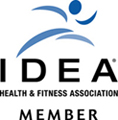
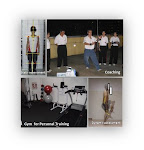
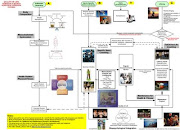




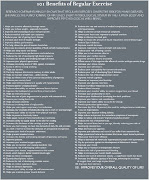






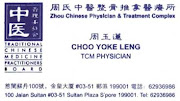



No comments:
Post a Comment